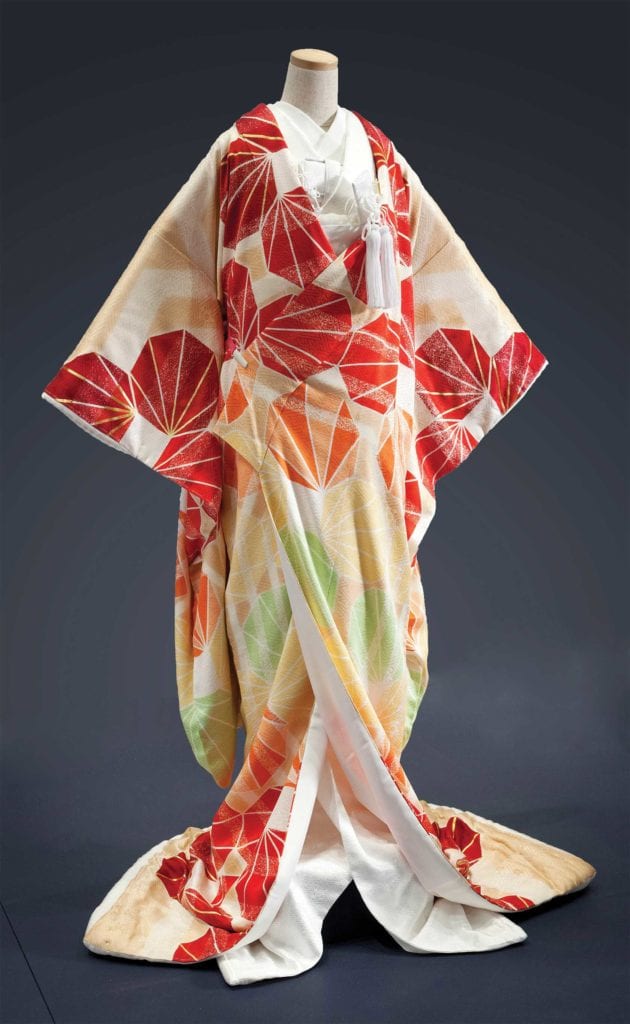‘The Kimono in Print: 300 Years of Japanese Design’ at Worcester Art Museum

A hallmark of couture and a cultural icon of Japan, the kimono is also a catalyst of Japan’s rich printmaking tradition. The first exhibition to explore its symbiotic evolution, “The Kimono in Print: 300 Years of Japanese Design,” is on view at the Worcester Art Museum through May 2.
Drawn primarily from the museum’s extensive collection of Japanese prints, the exhibition’s array of prints, scrolls and designers’ catalogs trace the mutual influences among kimono and print artists as well as consumers, who formed a vibrant ecosystem spanning fashion and lifestyle.

Suzuki Harunobu (1725–70), “Youth (wakashu) Unrolling a Hanging Scroll,” 1765–70, Publisher: Iwatoya Kenpachi, color woodblock print in red and green (benizuri-e), John Chandler Bancroft Collection
Vivian Li curated the exhibition and edited its handsome catalog, which has plates of all the prints as well as essays from scholars that extend its exploration into such arenas as natural history, erotica, fashion, theater and global trade in Japan, from the Edo period (1603–1868) through the Meiji period (1868–1912).
During these three centuries, as Japan evolved from a feudal shogunate society into a less hierarchal society open to overseas trade and western influences, the kimono remained the garb of choice for the elite. A T-shaped garment belted by a broad sash tied in the back with a thick bow, the kimono has changed little in its overall form since the 14th century. Its innovations instead focus on surface design and technique. Worn by both women and men, the kimono is highly expressive of the wearer’s social class and personal taste as well as cultural and social trends.
The exhibition’s works include prints and scrolls as well as books that served as catalogs for patrons to select patterns for their kimonos — from early woodblock print volumes in black and white to a design book by the 20th-century avant-garde group Mavo.
Prints and books expanded business for kimono designers, fabric houses and the urban pleasure zones of today’s Tokyo, Kyoto and Osaka. Arranged in five sections that trace the interplay and evolution of print and kimono design, the images also provide an enthralling visual experience of color, form and line.
Delicate calligraphic lines illustrate with equal finesse a ripe turnip, a boat laden with revelers, genitalia and a chrysanthemum. Illustrations of trysts show courtesans and their clients, including samurai elite and, later, newly rich merchants, wearing equally ornate fabrics. Prominent kabuki actors are portrayed wearing trademark sartorial styles, such as a kimono with checkerboard patterns favored by one, or swirls preferred by another. One is rendered in a kimono with a brown hue named for him.
The stunning centerpiece of the exhibition is an actual kimono, the “Worcester Wedding Kimono” (2020). Commissioned by the museum, its soft folds cascade to the floor in columns of silk printed in warm gold and russet hues.
Its making is the subject of the museum’s companion online exhibition, “Kimono Couture: The Beauty of Chiso,” co-curated by Vivian Li and Christine Starkman in partnership with Chiso, the Kyoto-based kimono design and production house that created the kimono. Videos show the deeply collaborative process, in which Chiso artisans applied seven textile techniques and seven gradations of color to develop the kimono, which celebrates the seven hills of Worcester and evokes the brilliant maple foliage of fall in both Japan and New England.
Admission is by timed ticket, purchased in advance at worcesterart.org.






